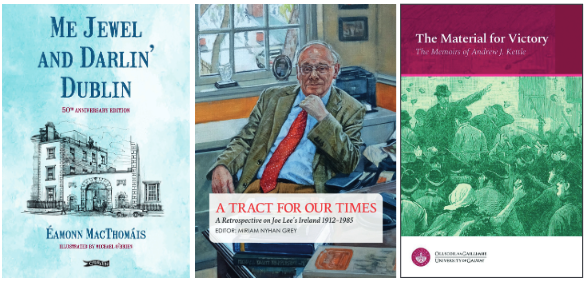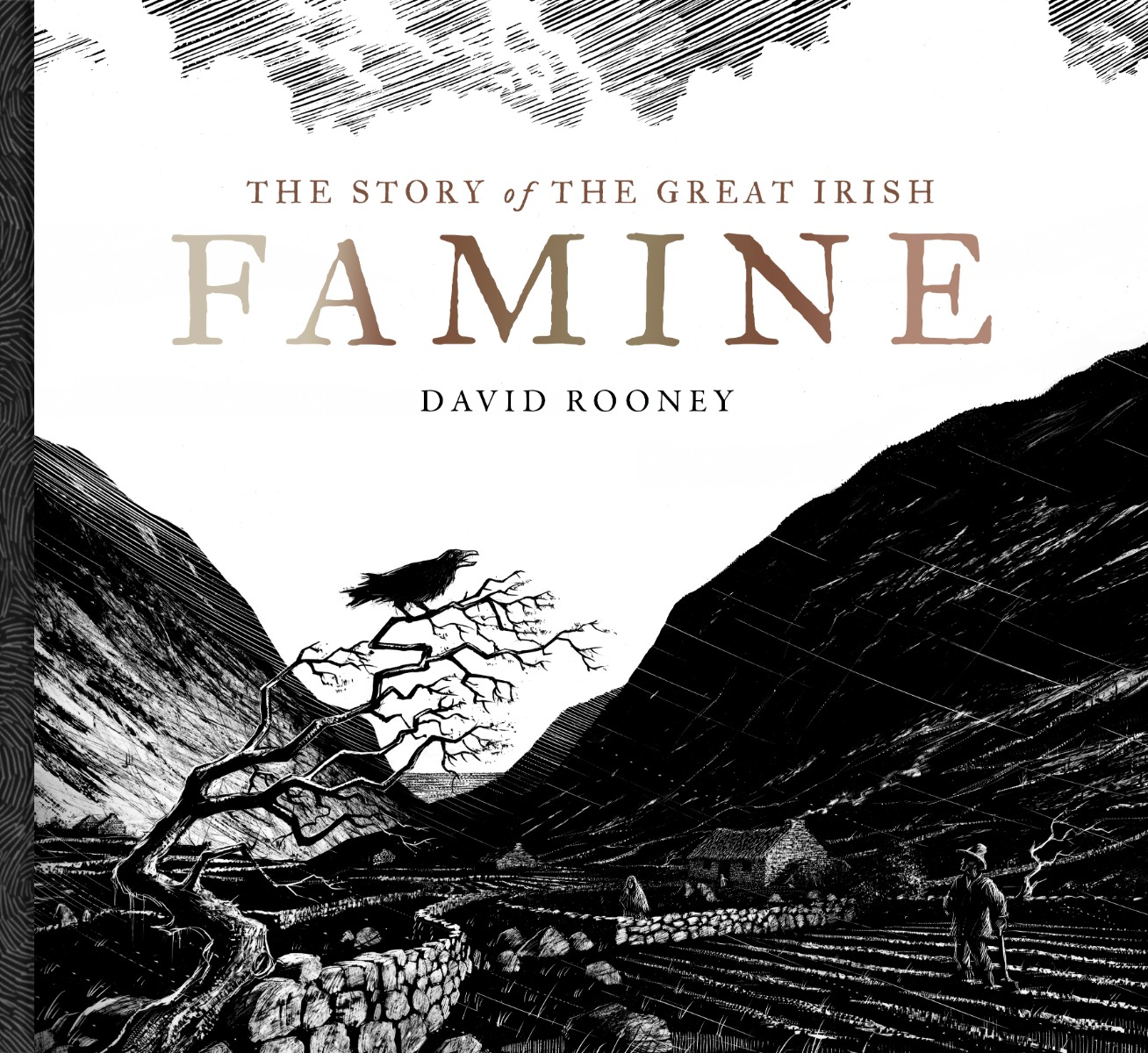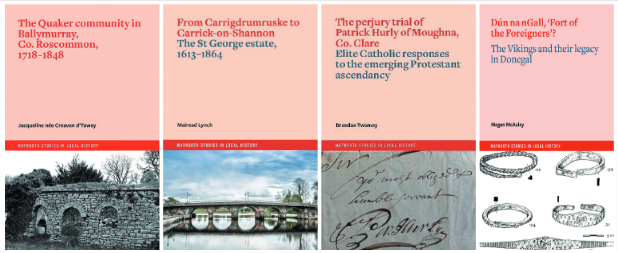By Daragh Fitzgerald
The O’Brien Press celebrated its 50th anniversary in November 2024, and to mark the occasion it released a new edition of its first publication, Éamonn MacThomáis’s classic Me jewel and darlin’ Dublin. While the book, I am sure, occupies a special place on many readers’ shelves, this edition offers much to the already initiated, with new perceptive forewords from Donal Fallon and Ivan O’Brien, grandson of O’Brien Press founder Tom. Those yet to engage with the book are in for a treat, as it is a truly unique piece of writing, in the mould of James Joyce and Flann O’Brien, according to the first reviewers in the Irish Press. MacThomáis wrote the book, an ode to working-class Dublin, from a cell in Mountjoy Gaol, where he was imprisoned without trial by jury for his editorship of An Phoblacht. A proud republican, MacThomáis is fittingly buried in Glasnevin Cemetery alongside Frank Ryan.

Joe Lee’s Ireland 1912–1985 is another touchstone text that may be familiar to readers, who should then be interested in A tract for our times: a retrospective on Joe Lee’s Ireland 1912–1985. Edited by Miriam Nyhan Grey, this is a collection of essays from towering historians like Andy Bielenberg, Anne Dolan, Diarmaid Ferriter and many more, each reflecting on how Lee’s work influenced the historiography, along with their own thinking and writing. Lee lived the historian’s dream with the publication of Ireland 1912–1985, achieving acclaim in high places while also breaking out from the confines of the academy to reach a broader audience, winning a litany of awards and going into dozens of reprints, culminating in his appearance on the Late Late Show alongside Gearóid Ó Tuathaigh, who also has a contribution in Tract for our times. This highly sought television slot and the collection of essays, published 35 years later, distilling the importance of the original work are a testament to its enduring ability to engage and provoke.

While Joe Lee’s legacy endures, The material for victory: the memoirs of Andrew J. Kettle seeks the revival of someone who has fallen by the wayside in both historiography and popular understanding. Edited by Niamh Reilly, these memoirs are a vital source for historians studying the Land War and the politics of late nineteenth-century Ireland. Born in 1833 to a relatively well-off tenant farmer family in Swords, Co. Dublin, Kettle dedicated much of his life to agrarian agitation and was a founding member of the Irish Tenants’ Movement and the Land League. One of Parnell’s most trusted confidants, Kettle is best known for his work in mobilising tenant farmers across the country in support of the three ‘F’s—fair rent, fixity of tenure and free sale of interest—which sound to me like as good principles as any for 21st-century Ireland. A class traitor of the good kind, Kettle was described by Michael Davitt as ‘one of the most loyal, energetic, and able advocates given by the gentleman farmer class to the cause of tenant rights and nationalism’. Kettle’s son, Tom, would follow in his father’s footsteps in this regard, championing the locked-out Dublin workers in 1913 when much of bourgeois nationalism sided with the employers. Besides the political history, these memoirs provide much material for social historians and paint an evocative picture of pre-Famine Ireland in particular, as Kettle describes the sports and festivals of the peasantry, the various lodgers who would stay on the family farm and his aversion to the fairy bushes dotting the countryside around him.

The bucolic portrait of pre-Famine Ireland presented in Kettle’s nostalgic depiction of his youth is in stark contrast to the fierce and violent scraperboard engravings in David Rooney’s The story of the Great Irish Famine. This style involves scratching away a layer of black ink to reveal a chalk-coated board underneath and is the perfect medium to express the austere horrors of An Górta Mór. The focus on style does not weaken the substance, as the book succinctly details both the causes and course of the disaster that still evokes such visceral reactions, rendered ever more resonant by the constant stream of real images of skin-and-bone starving children coming out of Gaza today.
From the British Crown to the Liberals, Trevelyan to Russell, the landlords to the graziers, plenty of groups and individuals emerge from the Famine with reputations so stained as to be entirely destroyed. One group not tarnished by their activities during the disaster are the Quakers, who provided enormous amounts of support to the starving population with no strings attached. Jacqueline née Creaven d’Towey’s The Quaker community in Ballymurray, Co. Roscommon, 1718–1848 details the history of the only Quaker community in Connacht to survive more than twenty years. While their activities during the Famine are well documented, the Quakers were not aloof from other developments in Ireland, and got caught up in the political whirlwind of the 1790s. A pacifist organisation, members of the society were encouraged to remain neutral during this period; nevertheless, Ballymurray Quaker meetings constantly dealt with members who refused to ‘surrender arms’, indicating that many on the ground had been radicalised by the revolutionary or reactionary forces of the day. Incidentally, the Friends Meeting House that now sits on Eustace Street in Dublin was once the site of the Eagle Tavern, where the first Dublin Society of the United Irishmen was formed.
The turbulence of the 1790s also features in Mairead Lynch’s From Carrigdrumruske to Carrick-on-Shannon: the St George Estate, 1613–1864, which remarkably is the first detailed study of the principal town and administrative centre of Leitrim. Once part of the Gaelic territory of West Bréifne, the borough town of Carrigdrumruske was incorporated by royal charter in 1613, and a decade later was part of the plantation land granted to George St George of Cambridgeshire and Anglicised as Carrick-on-Shannon. The St Georges arrived in the area as part of the Crown forces suppressing the O’Neill uprising; George’s brothers William and John were killed in the fighting, while he himself was injured but survived to reap the rewards of conquest and confiscation. Towards the end of the eighteenth century the town once again heard the clamour of fife and drum, this time of the Defenders, who operated by night in the interests of the men of no property. Their day (still) yet to come, seventeen men would be sentenced to hang in Carrick-on-Shannon courthouse after the disastrous battle of Ballinamuck.
Everyone loves a good courtroom drama, especially those that highlight issues that resonate far beyond the bar and are filled with larger-than-life characters. Readers in agreement should look to Brendan Twomey’s The perjury trial of Patrick Hurly of Moughna, Co. Clare: elite Catholic responses to the emerging Protestant Ascendancy, which uses the case of a shady Jacobite to tease out complex themes and debates surrounding the Protestant Ascendancy as it tightened its grip on Ireland in the early eighteenth century. ‘Playboy of the Jacobite world’, Hurly was allegedly involved in numerous financial dealings of questionable legality across Dublin, London, Paris and Holland, while he operated under various aliases such as the fictitious ‘Viscount Mountcallan’ and had a reputed ‘forty wives’.
Megan McAuley’s Dún na nGall, ‘Fort of the Foreigners’? The Vikings and their legacy in Donegal is a highly innovative work that utilises techniques of history, archaeology, linguistics, onomastics and folklore to proffer a compelling argument that the Vikings are Donegal’s eponymous ‘foreigners’. Usually associated with Dublin, Limerick and Leath Moga more broadly owing to northern Uí Néill dominance, Viking activity in Donegal nevertheless features in the Annals of Ulster and those of the Four Masters, while local tradition held that a ‘Dane’ was buried near the site at Roosky where silver likely imported by Vikings was later discovered.
Éamonn MacThomáis, Me jewel and darlin’ Dublin, 50th Anniversary Edition (The O’Brien Press, €18.99 pb, 208pp, ISBN 9781788495325).
Miriam Nyhan Grey (ed.), A tract for our times: a retrospective on Joe Lee’s Ireland 1912–85 (University College Dublin Press, €40 pb, 147pp, ISBN 9781739086374).
Niamh Reilly (ed.), The material for victory: the memoirs of Andrew J. Kettle (University of Galway Press, €20 pb, 300pp, ISBN 9781911690146).
David Rooney, The story of the Great Famine (Gill Books, €24.99 hb, 32pp, ISBN 9781804581797).
Jacqueline née Creaven d’Towey, The Quaker community in Ballymurray, Co. Roscommon, 1718–1848 (Four Courts Press, €12.95 pb, 74pp, ISBN 9781801511599).
Mairead Lynch, From Carrigdrumruske to Carrick-on-Shannon: the St George Estate, 1613–1864 (Four Courts Press, €12.95 pb, 72pp, ISBN 9781801511315).
Brendan Twomey, The perjury trial of Patrick Hurly of Moughna, Co. Clare: elite Catholic responses to the emerging Protestant Ascendancy (Four Courts Press, €12.95 pb, 72pp, ISBN 9781801511339).
Megan McAuley, Dún na nGall, ‘Fort of the Foreigners’? The Vikings and their legacy in Donegal (Four Courts Press, €12.95 pb, 72pp, ISBN 9781801511322).
